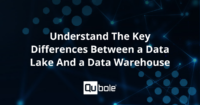Big Data Cloud Analytics
In today’s ever-demanding marketplace, getting the right data to the right people at the right time has become the name of the game. Big Data Analytics offers a nearly endless source of business and informational insight that can lead to operational improvement and new opportunities for companies to provide unrealized revenue across almost every industry.
From use cases like customer personalization, risk mitigation, fraud detection, internal operations analysis, and all the other new use cases arising near-daily, the value hidden in the company data has companies looking to create a cutting-edge analytics operation.
Discovering value within raw data poses many challenges for IT teams. Every company has different needs and different data assets. Business initiatives change quickly in an ever-accelerating marketplace, and keeping up with new directives can require agility and scalability. On top of that, a successful Big Data Analytics operation requires enormous computing resources, technological infrastructure, and highly skilled personnel.
Big Data Analytics
Technologies like Redshift, Presto, Spark, and Apache Java-based Hadoop cluster computing (Spark, Hive, etc.) have only been around for over ten years. Technologies like SQL, DB2, GPFS, DFS, Rock Clusters and Luster, Power BI, or even IBM Cognogs, for example, have been around for multiple decades.
There are four different categories of analytics:
- Descriptive analytics
- Diagnostic analytics
- Predictive analytics
- Prescriptive analytics
These analytics have different levels of understanding, disciplines with expertise, skills, and knowledge, deriving an overall mission objective or returning from an analytical need.
The advancement of cloud computing is nothing more than the extension of decades of on-premise computing, all being integrated, refracted, and interconnected with a high-speed fiber-optic pervasive type of infrastructure. Thus, allowing on-demand infrastructure with the click of a mouse, and an unlimited holistic view and access to data. In many aspects, from the analytical standpoint, we are refactoring 40 years of on-premise research and development, making it pervasive or cloud computing-enabled.
Future of Big Data Analytics
Early adopters, practitioners, and/or historical pioneers, the evolution of computer science as we know it today, is working hard to do more with data, and faster. The space we live in is explicitly and holistically focused on one thing, quantifiable computational analytical results. Analytical sciences may be the next term, whether it be a very simple analytical return, a deep scientific or life science algorithm, or a set of living libraries to learn and write machine code to influence the results or decisions.
For example, at some point in the not-too-distant IoT or Blockchain future, and refracturing the analytics for the Cloud, today’s Java-based Clusters may be enhanced with prior Cluster technologies like Luster, Zeph, or even better. Similar to Delta Lake, SQL to NoSQL and back to SQL like data management cloud refracturing.
The analytical quantifiable computational mission objective is the key. The skills, knowledge, and expertise to achieve this can be as individualized or personalized as we are.



